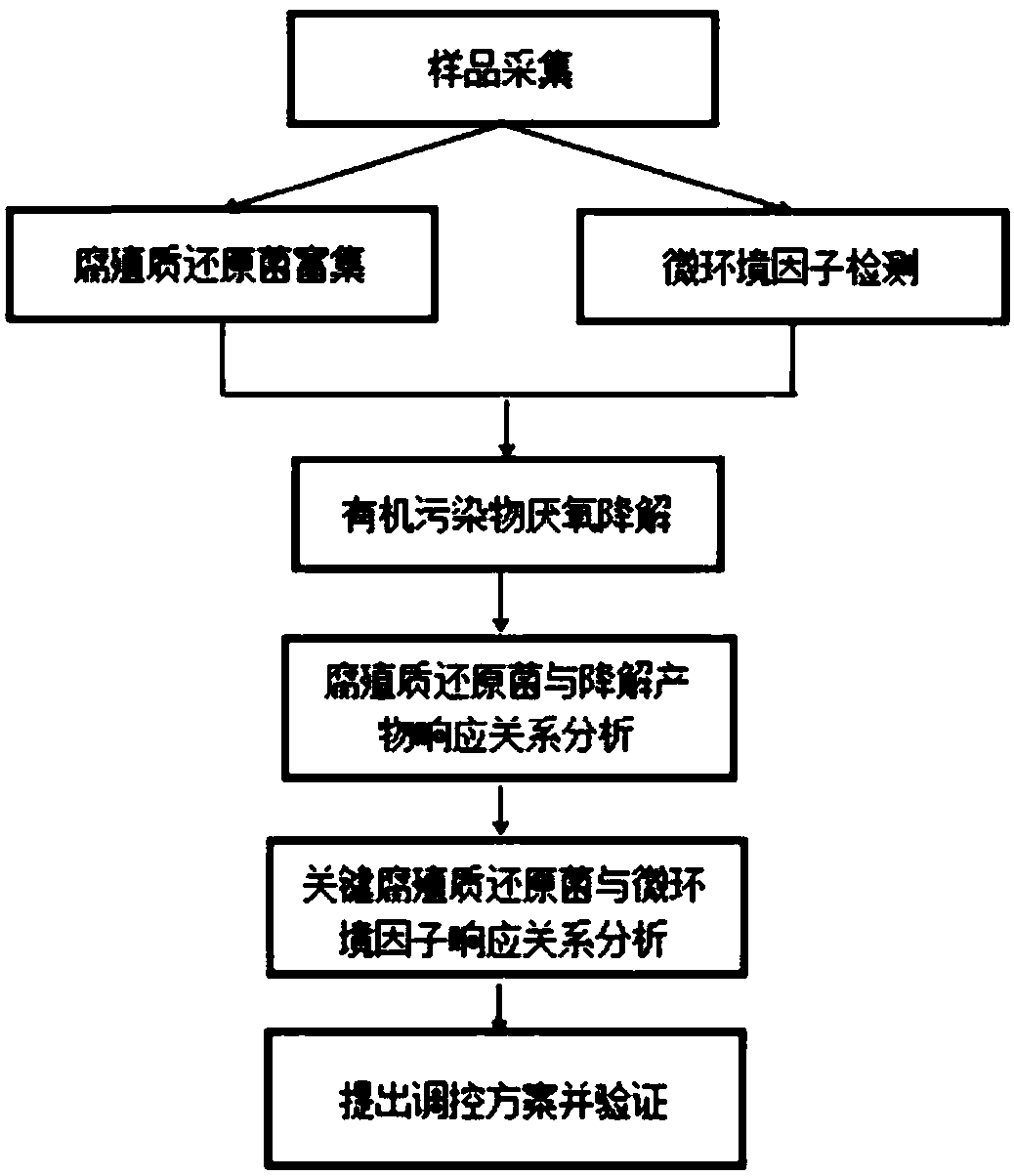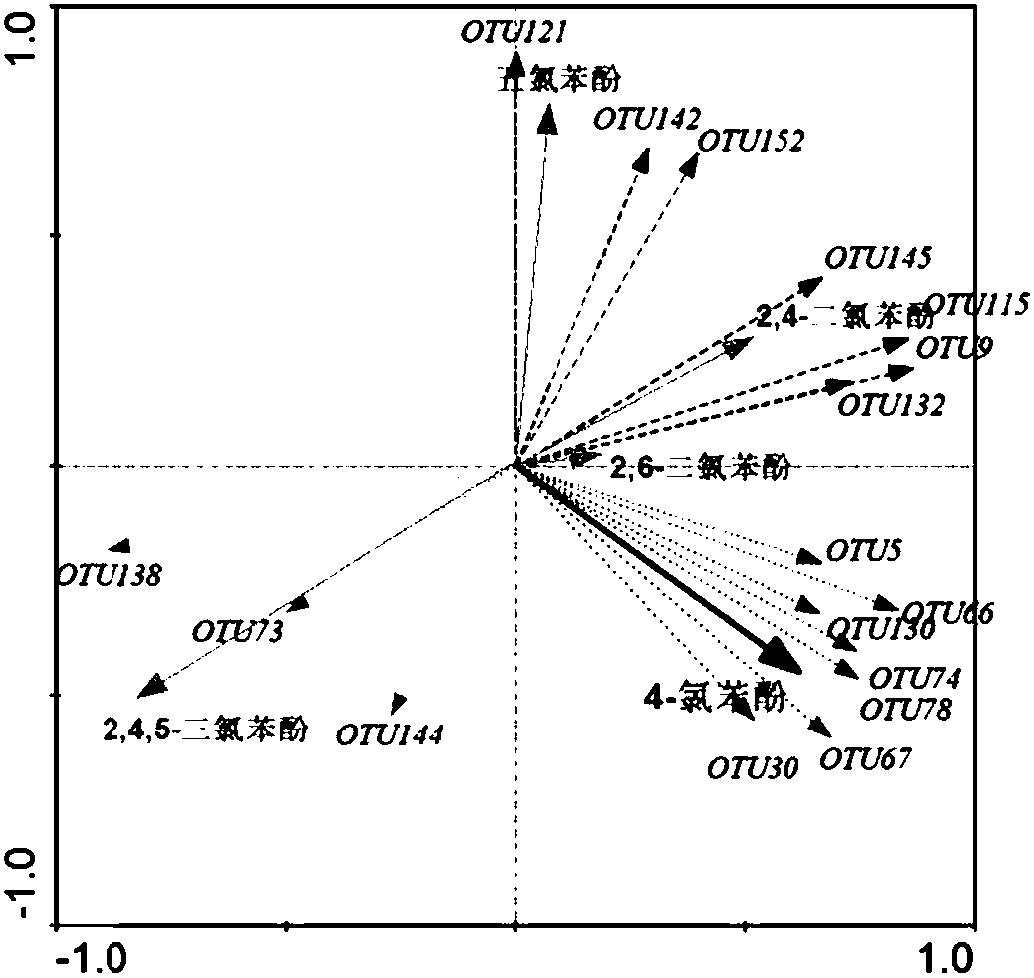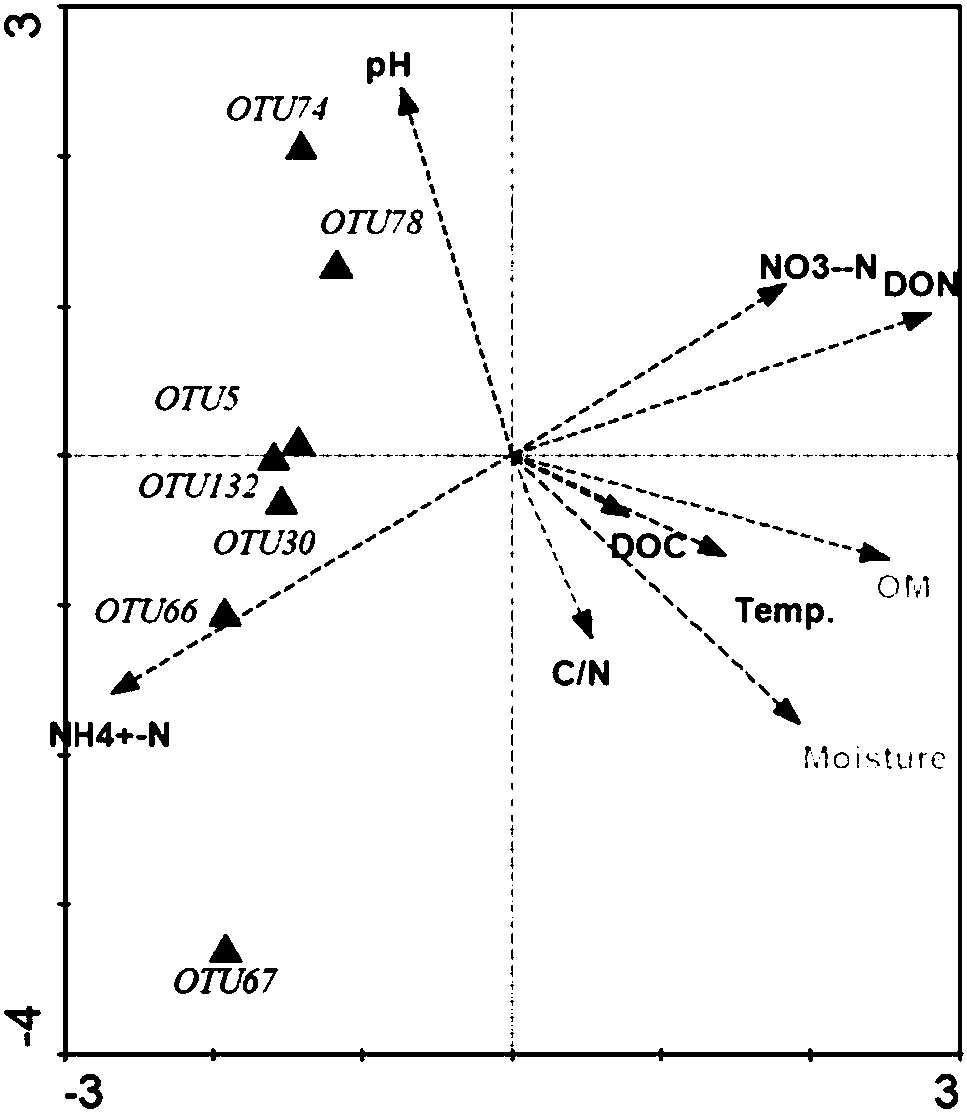Regulation and control method for promoting directional degradation of organic pollutants through compost humus reducing bacteria
A technology for organic pollutants and humus, which is applied in the methods of using microorganisms, the preparation of organic fertilizers, organic fertilizers, etc., can solve problems such as the difficulty of reducing bacteria in humus, and achieve remarkable control effects, clear control steps, and improved operability. Effect
- Summary
- Abstract
- Description
- Claims
- Application Information
AI Technical Summary
Problems solved by technology
Method used
Image
Examples
Embodiment 1
[0034] Take chicken manure (CM), weeds (WW), dead branches (GW) and other composting materials for composting, collect samples of compost in three stages of heating period, high temperature period and decomposing period, enrich and cultivate humus reducing bacteria and use them The flora structure was detected by 16S rDNA sequencing. The test results are shown in Table 1 (CM1, CM2 and CM3 represent the samples of chicken manure composting in the heating period, high temperature period and decomposing period respectively, and the rest are similar) and Table 2. The different physical and chemical indicators are shown in Table 3, including temperature, water content, ammoniacal nitrogen (NH 4 + -N), nitrate nitrogen (NO 3 - -N), water soluble organic nitrogen (DON), water soluble organic carbon (DOC), C / N, organic matter (OM) and pH.
[0035] Table 1 The sum of the sequence numbers of humus-reducing bacteria at the genus level in the composting process of different materials ...
Embodiment 2
[0055] Cow manure (DCM), fruits and vegetables (FVW), straw (SW) and sludge (SS) were taken as compost materials for composting, and the samples of compost in the three stages of heating up period, high temperature period and decomposing period were collected respectively to enrich and cultivate humus The bacteria were reduced and the flora structure was detected by 16S rDNA sequencing. The test results are shown in Table 2 and Table 4. The different physical and chemical indicators are shown in Table 5, including temperature, water content, NH 4 + -N, NO 3 - -N, DON, DOC, C / N, OM and pH.
[0056] Table 4 The sum of the sequence numbers of humus-reducing bacteria at the genus level in the composting process of different materials
[0057]
[0058]
[0059]
[0060]
[0061] Table 5 Changes of microenvironmental factors during composting of cow dung, fruits and vegetables, straw and sludge
[0062]
[0063]
[0064] Humus-reducing bacteria enriched in dif...
PUM
 Login to View More
Login to View More Abstract
Description
Claims
Application Information
 Login to View More
Login to View More - R&D
- Intellectual Property
- Life Sciences
- Materials
- Tech Scout
- Unparalleled Data Quality
- Higher Quality Content
- 60% Fewer Hallucinations
Browse by: Latest US Patents, China's latest patents, Technical Efficacy Thesaurus, Application Domain, Technology Topic, Popular Technical Reports.
© 2025 PatSnap. All rights reserved.Legal|Privacy policy|Modern Slavery Act Transparency Statement|Sitemap|About US| Contact US: help@patsnap.com



